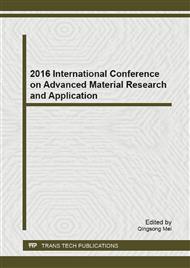p.241
p.245
p.250
p.254
p.260
p.265
p.271
p.276
p.285
The Influence of Cu/Ti Overlapping Region Microstructures on the Mechanical Tensile Properties of the Joint via Friction Stir Lap Welding
Abstract:
The investigation on friction stir lap welding (FSLW) of dissimilar Cu and Ti is reported in this research, aiming to achieve a reliable solid-state joining and effectively control the intermetellic (IMC) formation at the lapping Cu/Ti dissimilar welded interfaces. Following the previous process optimization of the FSLW tool rotation speed and downward plunge value of the tool pin into the lower Ti sheet, the tool travel speed was further tailored for a defect-free joint. No significant Ti-Cu IMC was founded in the generated joints. After the analyses of tensile properties of the FSLW joints, the so-called mechanical locking effect of the Cu/Ti alternate band structure was further elucidated. The composite-like structure played a so-called mechanical locking effect on the Cu/Ti lap joints. The fracture resistant strength of the joint reached 95% of that of the used parent copper.
Info:
Periodical:
Pages:
260-264
Citation:
Online since:
January 2017
Authors:
Price:
Сopyright:
© 2017 Trans Tech Publications Ltd. All Rights Reserved
Share:
Citation:


